With the advent of worry on their backs, almost every person faces.Using the painkillers, the majority of the population does not even ask why the spine hurts, attributing negative manifestations to the usual cold, designs or consequences of stretching.Meanwhile, painful syndrome (BS) can be an alarming signal for the emergence of serious pathologies.
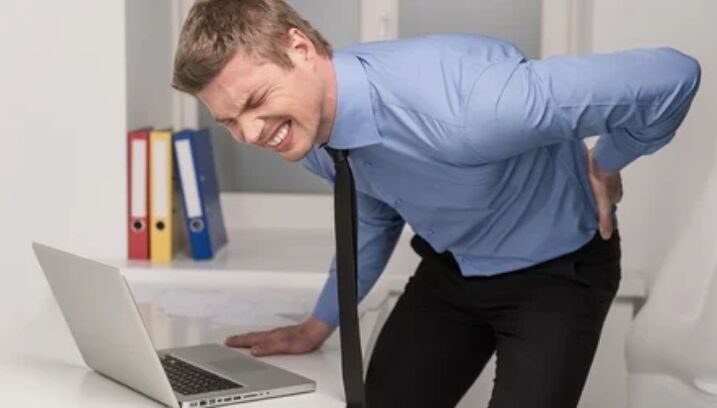
In different parts
Back pain is different.
Among them are:
- Combat.Vary in frequency.
- Increasing in the process of pathological conditions, there is an increase in the degree of intensity of unpleasant manifestations.
- The dagger is a consequence of the emergency conditions.
- In the form of fires.They are recorded in case of damaged spinal column functionality.
- Permanent or monotonous.
In addition, back pain can be of two types:
- Foreseen.Spreads along the nerve fibers.Can radiate to the distal parts of the body.
- Reflected.It appears during malfunctions in the work of the internal organs.
On the right side
There are a number of circumstances that explain why the back hurts to the right.They are:
- The result of the hypodynamia, due to which the abdominal muscles lose their elasticity and elasticity, while the entire load is laid into the spinal column;
- injuries and soft tissue bruises;
- Performing physical work in an unnatural position (with an uneven load).
In addition to natural factors, the cause of unpleasant sensations in the back may be diseases of the internal organs and the muscular system.
This symptom may be part of the clinical figure for the following diseases:
- Diseases of the respiratory system.With lung inflammation (one -sided right pneumonia), in addition to back pain, the patient complains of the appearance of dry cough, general weakness, increased body temperature indicator.
- BS BS on the right is observed with pleurisy.It is associated with the discharge of purulent saliva and difficulty breathing.
- Pathology of the liver and gall bladder.BS is distinguished by the duration of the current.To stop it, soothing sedatives or antispasmodic drugs are used.Clinical photography is supplemented by signs of intoxication (vomiting, vomiting, violation of defecation law).
- Gastrointestinal diseases.With pancreatitis or gastritis, pain syndrome is usually located on the left side, but often radiates to the right.
- Urinary tractThey are manifested by prolonged or thick pain.It occurs against the backdrop of frequent urination, with the advent of red blood cells (blood) in the urine.A distinctive feature is that a sick person cannot find an appropriate body position to reduce back pain.
- Appendicitis.In addition to the unpleasant sensations in the abdomen, the patient notes that the back hurts on the right side.Additional symptoms are the appearance of nausea and vomiting reflex, an increase in body temperature indicator, a general division.
- Gynecological pathologies.The manifestations of the discomfort on the right are recorded in the event of an ectopic pregnancy, inflammation of the supplements or due to the growth of cystic stamps of the ovaries.
- Osteochondrosis.The pain can be localized both on the right and the left.It is associated with rigidity in motion, and grows with physical work (especially if a person performs it for the first time).In advanced forms, radiation on the fingers is observed with their numbness.
On the left side
Localization of back pain in the left can be the main or additional symptoms in the clinical appearance of many diseases.
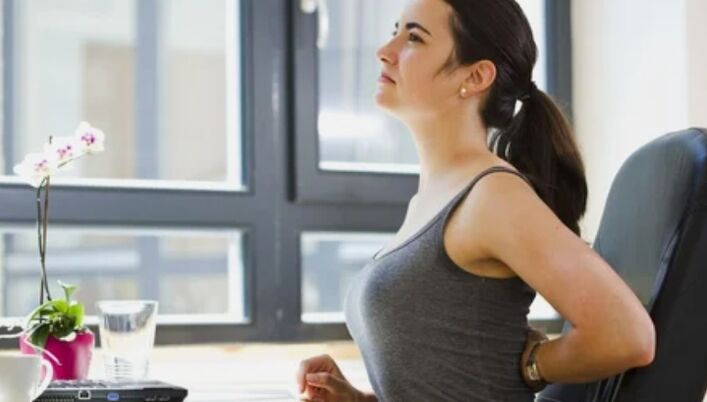
May occur in the following cases:
- Spinal column disease.Most often, the patient complains that the back hurts due to osteochondrosis, intercostal neuralgia or when pooling the nerve.Clinical photography is complemented by rigidity in motion, radiation in the upper limb, loss of sensitivity to the fingers.
- Stomach and intestinal diseases.Symptoms of pain manifestations are supplemented by the presence of vomiting, vomiting, excrement disorder and increased gas formation.These signs appear with the development of pancreatitis, intestinal colic, cholecystitis.
- Cardiological diseases.Acute painful syndrome from behind under the ribs in combination with shortness of breath and a burning sensation after sternum is a characteristic sign of myocardial infarction.
- In bronchi and lung BS can be observed with the development of pneumothorax, pleurisy, bronchitis or pneumonia.It can intensify when inhalation and decrease in extraction.
In the area of the lower back
The lumbar region starts from where the ribs end, and ends with a coke.Most often, patients, seeking medical help with back pain complaints, mean the lower back.
The causes of lumbar pain are the following conditions:
- 90% of all cases of lumbar pain are explained by a violation of the functionality of the spinal column (osteochondrosis, hernia between vertebrae, scoliosis, radiculitis).These conditions are characterized by symptoms in the form of unexpected shooting.
- At 6%, pain in the lower back is the result of violation of the urinary organs.This feature is manifested for pyelonephritis, cystitis, glomerulonephritis or in the formation of calculations (stones) in the kidneys.
- 4% are diseases of other internal organs (stomach, intestines).
In the blades area
A person can feel pain in the shoulder blades area at different locations of localization:
- Pain syndrome is located under the shoulder blade.This BS nature is marked in the presence of ulcers and erosion in the stomach.At the same time, the main epicenter of the negative sensations is concentrated in the epigastric area, and radiation gives it the shoulder blade.
- Chest compression, painful and thick pain often cause osteochondrosis or myositis.
- When the back hurts between the shoulder edges, then with a high degree of probability can be assumed about the localization of intercostal neuralgia (if BS occurs in the form of the fireplace).In the case of pneumonia development, painful sensations are improved by coughing and at the height of sigh.
- BS on the shoulder blade is most often manifested as a post -traumatic consequence.Symptoms of negative sensations improve when upper movements move.
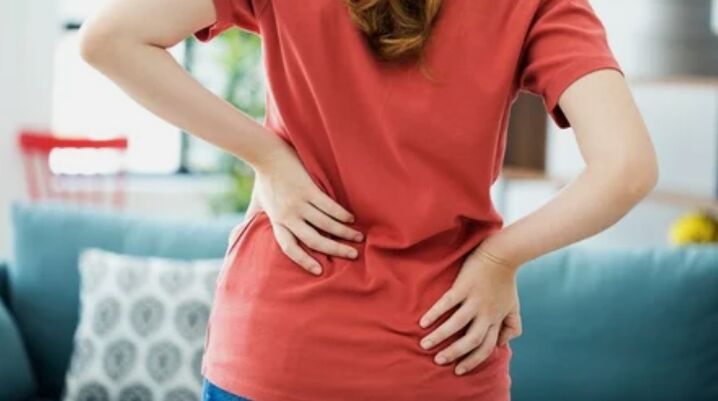
Along the spine
The cause of back pain along the spine may be the following conditions:
- Lumbalgia.It manifests itself acutely after lifting weights.
- Stoop, scoliosis or kyfosis cause unpleasant sensations that manifest by attracting or painting BS.
- A hernial extension between the vertebrae leads to compression of the nerve roots, which is why a burning sensation appears along the spinal column.In this case, there is a loss of sensitivity in the back.
- The cervical and thoracic osteochondrosis leads to changes in spinose processes of the vertebrae, which is due to the constant damage to their nerve endings.This causes back pain and motion stiffness.
- Injuries provoke an acute and sharp pain syndrome.In case of spinal cord injury, sensitivity occurs in the lower extremities.
- Arthritis is characterized by a gradual increase in disturbance, with the appearance of crisis and clicking on the beads.
- Endometriosis and adnexitis cause a feeling of disturbance in the back due to the anatomical regulation of women's reproductive organs (in the lower abdomen).
Below the lower back
The lumbosakral department most often experiences the load due to the improper elevation of severity, prolonged walking or from staying in a sitting position.But these situations only explain why the back hurts under the back.
The discomfort occurs in:
- pathological changes in the trap, osteochondrosis, hernia extension between the vertebrae);
- After damage to the sacrum or coccyx;
- In case of residence violation (scoliosis or lordosis).
Pain in the Sacral Department appears in diseases of the genitourinary sphere, constipation, cholecystitis or gastritis.In women, this symptom can indicate pregnancy or menopause.Sometimes it indicates the beginning of the menstrual cycle.
Back pain after sleep
Sometimes a person marks strong fatigue and separation after a night's rest.
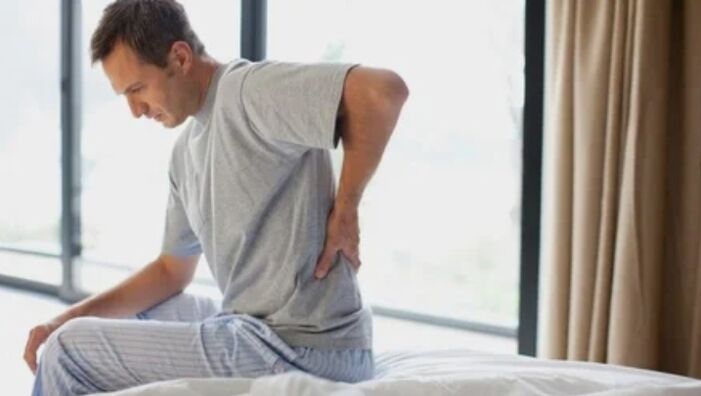
Most often, the following factors contribute to this:
- improper bedding organization (very difficult or soft mattress);
- increased physical activity or a large amount of work during the day;
- devastating changes with damaged functionality of vertebrae and discs between them;
- Age -related changes in the cartilage tissue of the intervertebral discs;
- the consequences of injuries;
- Inflammation in the internal organs of the abdominal cavity.
Pain in the muscles
Pathological processes in beads and intervertebral discs change the structure of bone and cartilage.Because of this, there is an overlap of the muscles and fascia of the tendon.This leads to the fact that the body reacts with the appearance of BS.
In some cases, it is noted that the back hurts after a long stay on the draft or during hypothermia.These two factors contribute to the manifestation of myositis, in which the pain is located in the superficial muscles.A distinctive feature of it is an increase in discomfort in palpation or when the patient tries to make curves or bend with the body.Sometimes its symptoms appear after spraying and bruising.
Pain syndrome in muscle groups often occurs due to intense exercise between athletes.In this case, overloaded muscle fibers lose their elasticity, seals appear in them, which are detected in palpation.
Causes of diseases
Spine pain is diagnosed with various diseases.
These include:
- Pathological processes in the spine (hernia, spondylitis, arthralgia, radiculitis);
- myocardial infarction, aorta aneurysm;
- stomach and intestinal diseases (pancreatitis, colitis);
- Formation of kidney calculations, cholecystitis, liver pain.
At the same time, all diseases have different etiologies, which is taken into account when choosing a treatment tactic.
Degenerative pathology
Degenerative changes occur in the cartilage and bone tissue.Violation of the morphological structure causes dystrophy, which is why osteochondrosis, spondylosis or spondy arthrosis occurs.
Among the provocative factors of destructive changes, they distinguish:
- Violation of metabolism causing insufficient intake of nutrients to intervertebral discs;
- limited consumption of useful trace elements in the body;
- Large loads and damage;
- Endocrine system dysfunctions;
- Bad habits, for example, smoking and excessive dependence on alcoholic beverages;
- Hypodynamia and sedentary lifestyle.
Inflammatory
Diseases that lead to inflammation in the spine can occur both independently and be the result of complications of pathologies.They are recorded in rare cases, but pose a serious threat to the patient's health.
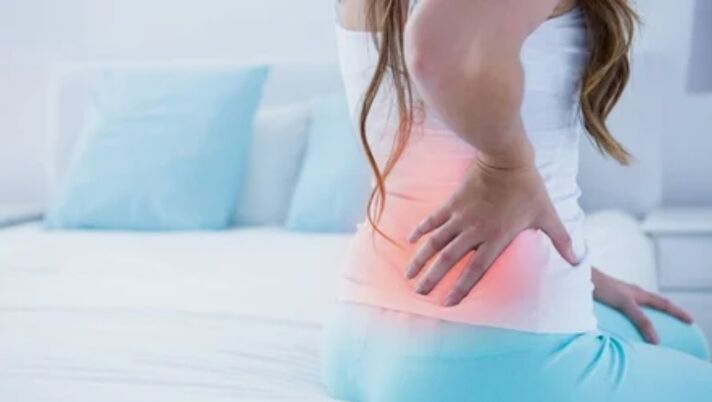
The focus of inflammation can be located in different parts of the vertebra:
- At the front, spondylitis, twocite or spondylodiscite is more often diagnosed;
- Localization in the back provokes the development of osteomyelitis, spondylitis or preverstebral abscess;
- If the spinal canal is infected, then inflammation is manifested by the development of an abscess or epiduritis.
Moreover, spine tissue can be affected due to tuberculosis, brucellosis, trichinellosis (a variety of helminthiasis).
This type of pathology is characterized by sharp pain attacks on muscle groups, which are difficult to eliminate analgesics.Clinical photography can be supplemented by related symptoms, for example, with a spasmodic increase in body temperature and loss of sensitivity in certain areas of the spinal column.
Myofascial syndrome
Myofascial syndrome has a chronic course with the formation of seals in the muscle tissue in the form of pain points (trigger).This causes not only severe discomfort, but also leads to a decrease in motor activity, as a result of which the patient is quickly tired of small physical activity.
The probability of developing myofascial syndrome increases many times in the following situations:
- osteochondrosis, spondylarthrosis, damage and bruises;
- In the case of diagnosing scoliosis or flat feet;
- If the work is related to the repetition of stereotypical movements;
- In case of violation of the psycho -emotional state (if this occurs with increased muscle stress).
Important importance in clinical practice is given to the condition of the causing points.They are active or secret.
Given this, they are classified as follows:
- Acute form.The causing points are in an active state and cause a feeling of disturbance when you try to make any moves.
- Subacute.Negative manifestations disappear at rest.
- Chronic.The latent condition only causes insignificant discomfort in the respective area.
Moreover, to perform the proper choice of therapy, a classification is approved in neurology according to the etiological principle:
- Primary points of causation are formed due to muscle damage;
- Secondary recorded in violation of the functionality of somatic nodes and organs.
The physiological causes
A different group of physiological causes of causing muscle corset pain is called home.They do not require treatment and pass on their own, after a little rest.
These include:
- doing hard physical work for a long time;
- Weakening or fatigue of the body;
- incorrectly selected pose for night rest or performing monotonous actions during work;
- Poor organization of a place for night sleep;
- A poorly chosen mattress or pillow.
To establish the cause of back pain, you should consult a doctor, as this may require a number of diagnostic measures.This will determine the tactics of the treatment process, which will not allow the disease to pass into a neglected form.






















